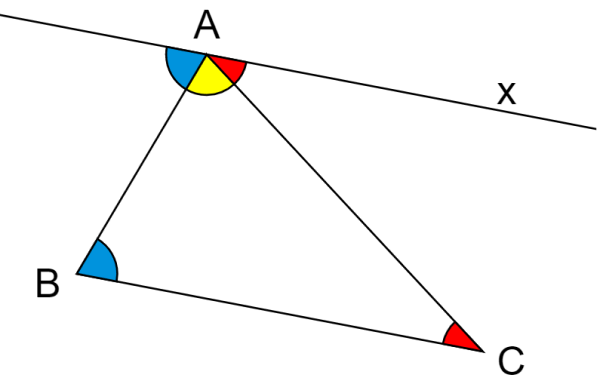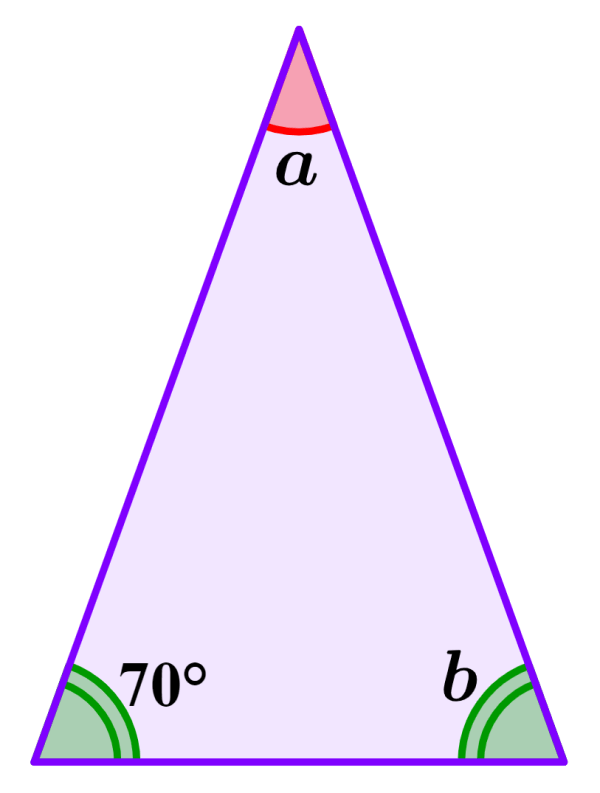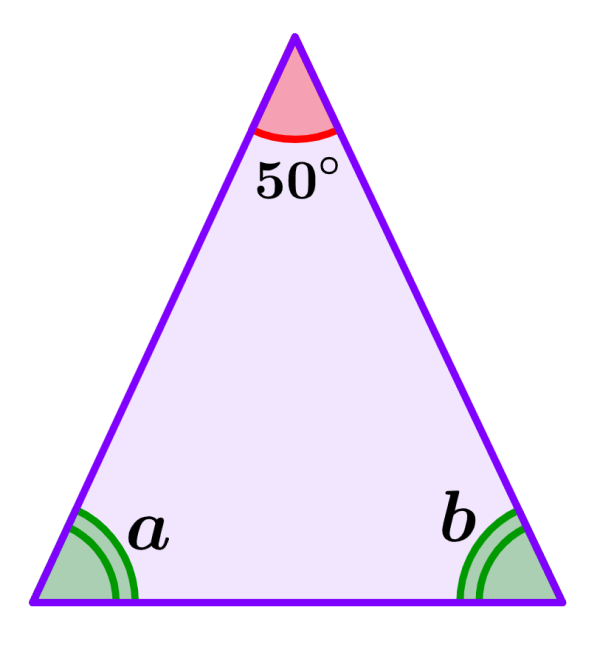The sum of interior angles of a triangle is always equal to 180°. This is because, if we join the three interior angles of the triangle, we will form a straight line. This property can be used to find the different measures of the three interior angles of the triangle.
Here, we will learn more about interior angles and we will look at some practice examples.
Sum of interior angles of a triangle
The total sum of the three interior angles of any triangle is always equal to 180°. We can verify this using the following diagram:

Line x is parallel to the base of the triangle, that is, to line BC. We know that when two parallel lines are intersected by a transversal, we form corresponding angles and vertical angles. Therefore, the angles that have the same color are equal. For example, red angles have the same measure.
When we join the three angles at vertex A, we can see that they form a straight line, so their total sum is equal to 180°.
How to calculate the individual interior angles of a triangle?
The measures of each individual angle can be calculated using the fact that their total sum is equal to 180°. Also, depending on the type of triangle, we need different information.
Interior angles of equilateral triangles
Equilateral triangles are triangles that are characterized by having all their sides with equal length. This means that the measure of its three interior angles is also the same. Therefore, we can calculate the measure of an interior angle simply by dividing the total sum of 180° by 3. Thus, we have:
180°÷3 = 60°
Each interior angle of any equilateral triangle always measures 60°.

Interior angles of isosceles triangles
Isosceles triangles are triangles that have two sides of the same length and the third side of different lengths. These triangles also have two angles with the same measure and the third angle with a different measure.
Generally, equal angles are represented with a double line. Therefore, we can determine the measure of each interior angle if we know the measure of one angle.
Interior angles of scalene triangles
Scalene triangles are triangles that have all sides of different lengths. Furthermore, the three interior angles also have different measurements. This means that we need the measures of two interior angles to calculate the measure of the third angle.
Examples of interior angles of a triangle
EXAMPLE 1
Determine the measures of the missing interior angles of the isosceles triangle below.

Solution: The green angles, which are represented by the double line, have the same measure. Therefore, we have b=70°.
To find the measure of angle a, we add the measures of the known angles and subtract from 180°. Thus, we have:
70°+70° = 140°
⇒ 180°-140° = 40°
Angle a measures 40°.
EXAMPLE 2
What is the measure of the missing angle in the scalene triangle below?

Solution: A scalene triangle has three angles with different measures. Therefore, we find the measure of the third angle by adding the known angles and subtracting from 180°:
63°+45° = 108°
⇒ 180°-108° = 72°
The missing angle measures 72°.
EXAMPLE 3
Find the measures of the missing angles in the isosceles triangle below.

Solution: In this case, we have the measure of the angle that is different from the other two. Therefore, we have to subtract it from 180° to find the sum of the two equal angles:
180°-50° = 130°
130° represents the sum of the two angles. Since these angles are equal, we simply divide by 2 to find the measure of each:
130°÷2 = 65°
The measure of angles a and b is 65°.
See also
Interested in learning more about angles of a triangle and other polygons? Take a look at these pages:



